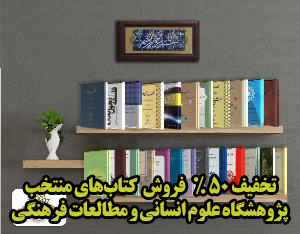تحلیلی نقشی-رده شناختی از شیوه های تصغیرسازی در گونه لری خرم آبادی (مقاله علمی وزارت علوم)
درجه علمی: نشریه علمی (وزارت علوم)
آرشیو
چکیده
تصغیرسازی (کوچک سازی) فرآیندی شناختی- مفهومی است که در همه زبان ها وجود دارد و از رهگذر آن معنای اصلی کوچک بودن در ابعاد و معانی ضمنی دیگر به یک صورت زبانی افزوده می شود. هدف از پژوهش حاضر تحلیل رده شناختی عناصر مصغرساز و راهکارهای تصغیرسازی در گونه لری خرم آبادی است. در راستای این هدف بر مبنای آرای اشنایدر (2003) و اشتکائور و همکاران (2012) به تحلیل کارکردهای معنایی و کاربردشناسی این عناصر پرداخته می شود. همچنین با نگاهی به شیوه های مختلف تصغیرسازی در زبان های دنیا، رده زبانی مناسب را برای این عناصر مشخص و برخی تفاوت ها و شباهت های این گونه با زبان فارسی برشمرده می شود. روش پژوهش توصیفی-تحلیلی است و داده های پژوهش از طریق مصاحبه و گفت وگو با گویشوران بومی و همچنین متون گفتاری و نوشتاری موجود استخراج شده اند. یافته ها نشان می دهند که گونه لری خرم آبادی علاوه بر راهکارهای تصغیرسازی نحوی و معنایی، از چهار پسوند مصغرساز “-ula”، “-ila”، “-ak”، “-ča”، دو پیشوند” “tila- و “kola-” و همچنین از سه راهکار ساخت واژی «ترکیب»، «تصغیرسازی مضاعف» و «تکرار» بهره می گیرد. نتیجه این که در این گونه زبانی عامل «سلسله مراتب جانداری» بر افزودن انواع عناصر مصغرساز به پایه های مختلف و معنای واژه حاصل، از جمله تصغیر/ کوچک بودن، شباهت، همراهی، نسبت/ رابطه و غیره و همچنین سایر معانی ضمنی و کاربردشناختی مانند تحبیب، تحقیر و دلسوزی کاملاً مؤثر است. به سخن دیگر، سلسله مراتب جانداری به صورت متوازی با پیوستار میزان به کارگیری شیوه ها و راهکارهای مختلف تصغیرسازی مرتبط است.A Typological-Functional Study of Diminution in the Luri Variety of Khorramabad
Diminution is a cognitive-conceptual process that exists in all languages, through which a core meaning of “smallness” and other connotative meanings are added to a linguistic form. The present research aims to conduct a typological investigation of the different strategies of diminution in the Luri variety of Khorramabad. To this end, based on the views Schneider (2003) and Štekauer et al. (2012), the semantic and pragmatic functions of these diminutive elements were analyzed. Besides by looking at different ways of diminution in the languages of the world, the appropriate language typology for these elements was identified and some differences and similarities of Luri variety with Persian language were enumerated. The research method was descriptive-analytic and the data were collected through interviews and conversations with native speakers of this variety as well as exploring spoken and written texts. The results showed that in addition to the syntactic and semantic diminution strategies, Luri Khorramabadi variety had the four diminutive suffixes "-ula", "-ila", "-ak", " –ča " , two prefixes "tila-" , "kola-" and three morphological strategies including “compounding”, “double diminution” and “repetition” were also used. Furthermore, it was found that the "animacy hierarchy" affected not only the diminutive elements joining various bases, but also the meaning construction of the resulting words, such as “smallness”, “similarity”, “accompaniment”, “relation”, as well as other implicit and pragmatic meanings such as “affection”, “contempt”, and “sympathy”. In other words, it was revealed that the “animacy hierarchy” was in parallel with the continuum of various diminution strategies employed in Luri.




